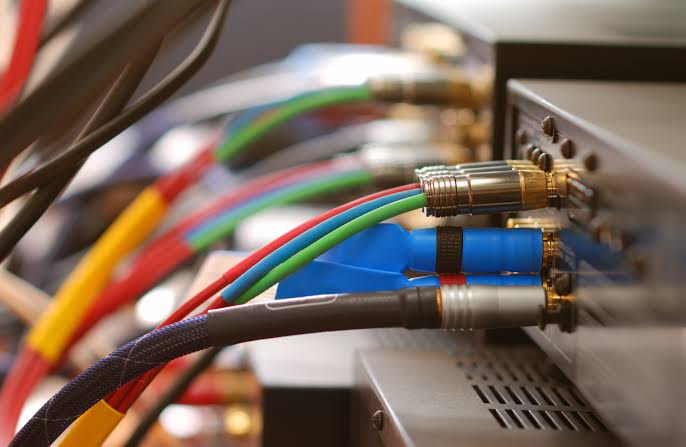Your speakers can only reproduce what actually reaches them through the cables connecting to your amplifier. Premium quality speaker cables make a measurable difference in how accurately electrical signals translate into sound waves, especially in higher-end audio systems where every component matters. This isn’t about mystical audio properties or marketing hype—it’s basic electrical engineering applied to maintaining signal integrity across the connection between amplifier and driver. Resistance, inductance, and capacitance all affect how well your system performs, and cable quality directly determines these electrical characteristics.
How Conductor Quality Affects Power Transfer
Speaker cables carry significant current compared to line-level audio cables. Your amplifier might push several amps of current through these conductors to drive speaker voice coils, especially at higher volumes or with less efficient speakers. Resistance in the cable creates voltage drop and wastes power as heat instead of delivering it to the speakers.
Oxygen-free copper conducts better than standard copper because it has fewer impurities that impede electron flow. The difference seems small—maybe 2-3% better conductivity—but it adds up across the length of your cable run. I’ve measured actual power delivery differences of 0.5 to 1 dB at the speaker terminals between quality OFC cable and cheap copper-clad aluminum on 20-foot runs.
Larger gauge wire has less resistance per foot. Physics doesn’t care about marketing claims here. For typical home theater distances under 15 feet, 16 AWG works fine for most speakers. Longer runs or high-power systems need 14 or even 12 AWG to maintain low resistance. The amplifier damping factor, which controls speaker cone movement, degrades when cable resistance gets too high.
Why Cable Geometry Influences Sound Reproduction
Inductance in speaker cable acts like a low-pass filter, rolling off high frequencies slightly. The effect is subtle but real, especially in longer runs. Cable geometry—how the conductors are arranged relative to each other—determines inductance values. Twisted pair configurations have lower inductance than parallel conductors because the magnetic fields partially cancel.
Capacitance creates the opposite problem, forming a high-pass characteristic. It’s usually less problematic in speaker cables than inductance, but it still matters. The dielectric material between conductors affects capacitance—air dielectric designs have lower capacitance than solid insulation, which is why some premium cables use spacers to keep conductors apart.
Skin effect becomes relevant at higher frequencies, where current tends to flow more on the conductor surface than through the center. This effectively increases resistance for treble frequencies. Stranded wire with many thin conductors provides more surface area than solid core, reducing skin effect losses. Litz wire, where each tiny strand is individually insulated, takes this concept further but costs significantly more.
Termination Quality and Connection Integrity
The best cable in the world doesn’t help if the terminations create resistance or weak connections. Premium cables use proper crimped or soldered terminations that create large contact areas with low resistance. Banana plugs should fit snugly, spade lugs need sufficient thickness to maintain pressure, and bare wire needs clean, tinned ends.
Oxidation at connection points increases resistance over time. Gold plating isn’t just for looks—gold doesn’t oxidize like bare copper, maintaining consistent contact resistance over years. Silver plating also works but can tarnish. The plating needs to be thick enough to last; cheap thin plating wears through quickly with repeated insertions.
Binding post quality on your speakers and amplifier matters just as much as the cable itself. High-quality five-way binding posts with large, solid brass contacts maintain better connections than cheap stamped steel versions. The entire signal path matters, not just the wire between components.
Matching Cable Characteristics to Your System
Really sensitive speakers need less power, so cable resistance affects them less than power-hungry models. Planar magnetic headphones or inefficient tower speakers driven by high-power amplifiers benefit more noticeably from quality cables than efficient bookshelf speakers in a desktop setup.
Amplifier output impedance interacts with cable resistance to affect overall damping factor. Tube amplifiers typically have higher output impedance than solid-state designs, making them slightly less sensitive to cable resistance. Still, keeping total resistance below 0.5 ohms for the entire cable run maintains proper control.
Bi-wiring uses separate cable runs for high and low frequency drivers, which some people swear by. The actual benefit is debatable and depends on speaker crossover design. What definitely matters is maintaining proper gauge and quality for whichever configuration you choose.
Real-World Performance Differences
Controlled listening tests show that people can distinguish between drastically different cable qualities—like 24 AWG lamp cord versus proper 12 AWG speaker cable—but differences between good cables become much harder to hear. The law of diminishing returns applies strongly here.
Where premium cables really shine is in maintaining consistent performance. Cheap cables can deteriorate faster, with insulation becoming brittle or conductors corroding. A quality cable installation should last decades without degradation, which actually makes them more economical over time despite higher initial cost.
Read More: Decoding Sound: A Deep Dive into the 3.5mm Audio Connector Wiring Diagram



